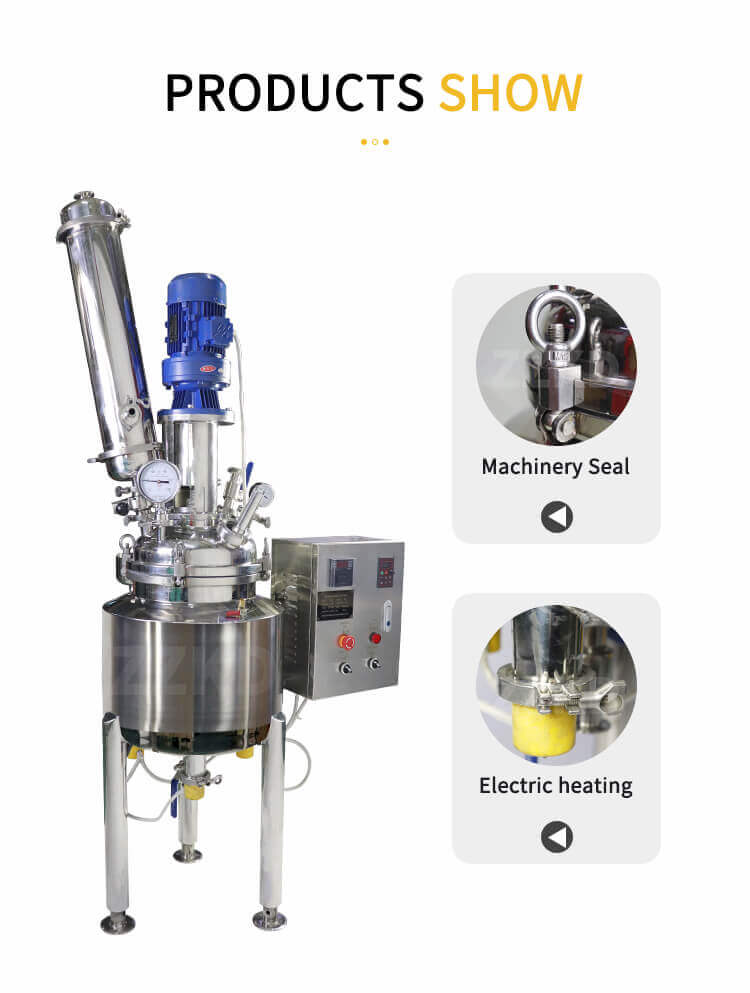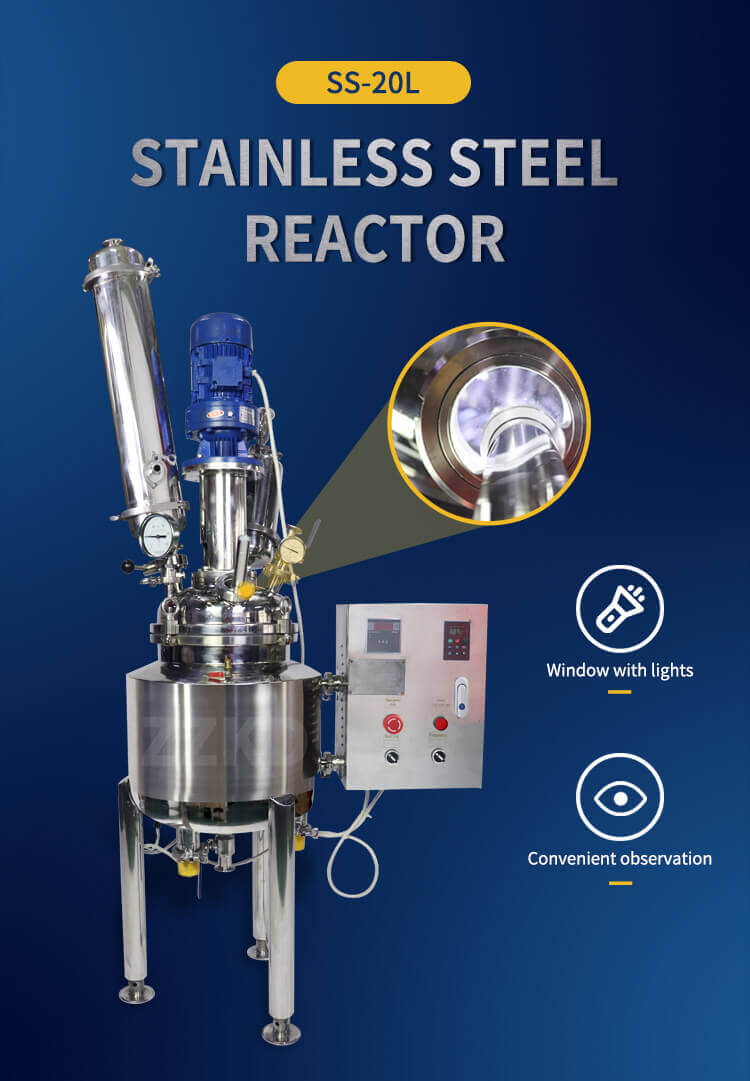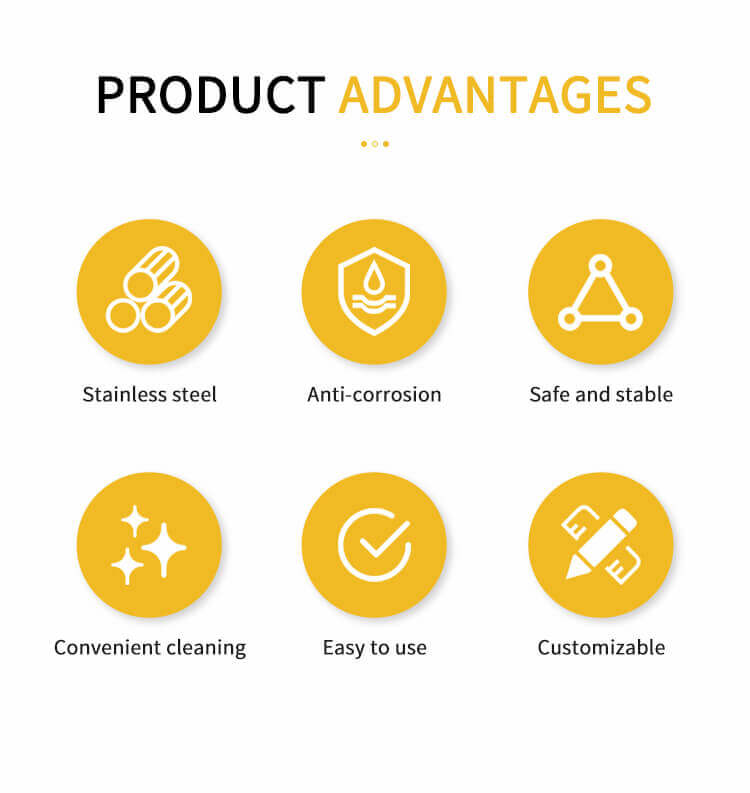The Versatility of Stainless Steel Mixing Tanks with Agitators
Stainless steel mixing tanks with agitators are indispensable tools in various industries, including pharmaceuticals, chemicals, and food processing. These robust and versatile vessels play a pivotal role in ensuring the efficient blending, homogenization, and reaction of substances. In this article, we will delve into the world of stainless steel reaction vessel, exploring their applications, design considerations, maintenance, and more.

1. Understanding the Key Components
A stainless steel mixing tank with an agitator consists of several crucial components that work in tandem to achieve effective mixing. The primary elements include:
1.1. Stainless Steel Tank
The tank itself is typically made of high-quality stainless steel, known for its exceptional durability, corrosion resistance, and hygienic properties. Stainless steel tanks can withstand a wide range of temperatures and are ideal for handling various substances, from acids to viscous liquids.
1.2. Agitator System
The agitator system is the heart of the mixing tank. It comprises a motor, shaft, and agitator blades. These components work together to create the necessary agitation and motion within the tank, ensuring uniform blending of the contents.
1.3. Control Panel
Modern mixing tanks come equipped with advanced control panels that allow operators to precisely adjust agitator speed, temperature, and other parameters. This level of control is vital for optimizing mixing processes.
2. Diverse Applications
Stainless steel mixing tanks with agitators find application in a wide range of industries, including:
2.1. Pharmaceutical Industry
In pharmaceutical manufacturing, these tanks are used for the preparation of medications, emulsions, and vaccines. Their stainless steel construction ensures compliance with strict hygiene standards.
2.2. Chemical Industry
Chemical processes often require the precise mixing of reactive substances. Stainless steel mixing tanks are up to the task, handling a variety of chemicals safely and efficiently.
2.3. Food Processing
The food industry relies on these tanks for tasks such as blending ingredients for sauces, soups, and beverages. Their corrosion-resistant properties make them ideal for handling food products.

3. Design Considerations
When selecting a stainless steel mixing tank with an agitator, several design factors should be taken into account:
3.1. Capacity
The tank's size should match the intended application. Smaller tanks are suitable for laboratory use, while larger ones are used for industrial production.
3.2. Agitator Type
The choice of agitator type depends on the viscosity and nature of the materials being mixed. Common agitator types include paddle, turbine, and anchor agitators.
3.3. Mixing Speed
Adjustable mixing speed is essential to accommodate different processes and materials. High-speed mixing is often required for dissolving solids, while low-speed agitation is suitable for gentle blending.

4. Maintenance and Cleaning
Proper maintenance is critical to the longevity and performance of stainless steel mixing tanks:
4.1. Regular Inspections
Periodic inspections of the tank, agitator, and motor are necessary to identify and address any issues promptly.
4.2. Cleaning Procedures
Thorough cleaning after each use is vital to prevent cross-contamination and ensure product quality. Stainless steel's smooth surface facilitates easy cleaning.
4.3. Lubrication
Agitator components require proper lubrication to prevent wear and extend their lifespan. Lubricants should be compatible with food or pharmaceutical applications if applicable.

5. Compliance with Regulations
Stainless steel mixing tanks used in the pharmaceutical and food industries must adhere to stringent regulatory standards. Certifications such as ISO9001 and CE ensure that these tanks meet the necessary quality and safety requirements.
6. Conclusion
Stainless steel mixing tanks with agitators are versatile and essential tools across various industries. Their robust construction, diverse applications, and compatibility with stringent regulations make them indispensable for processes that require precise and efficient mixing. Understanding their components, design considerations, and maintenance requirements is key to maximizing their performance and longevity. Whether you are in pharmaceuticals, chemicals, or food processing, these tanks play a pivotal role in ensuring product quality and consistency.


